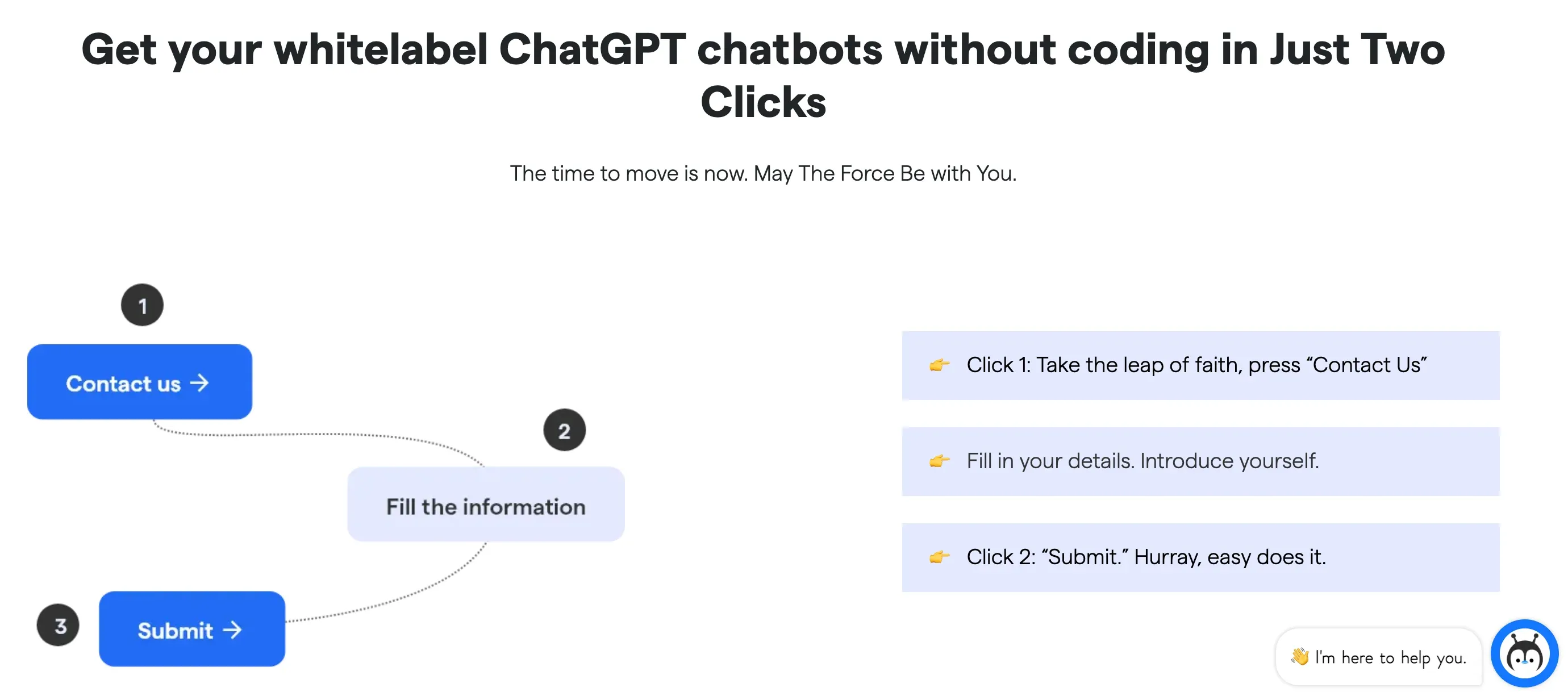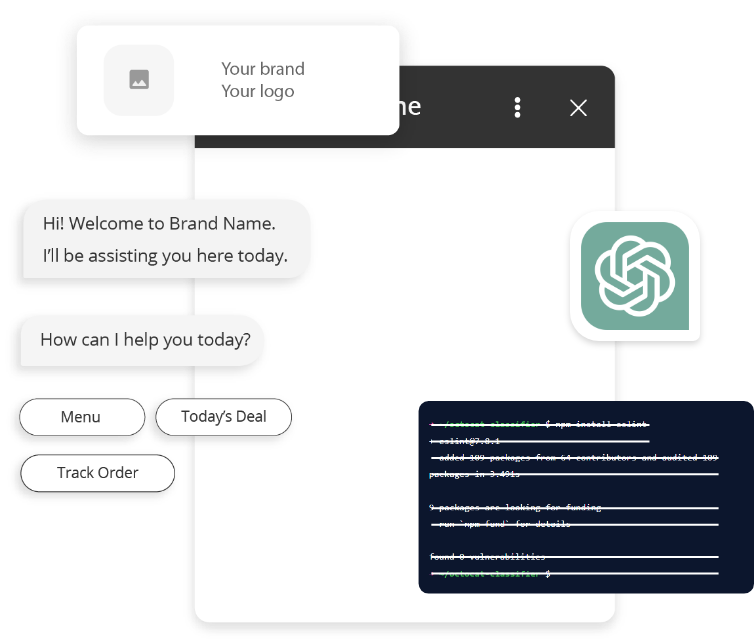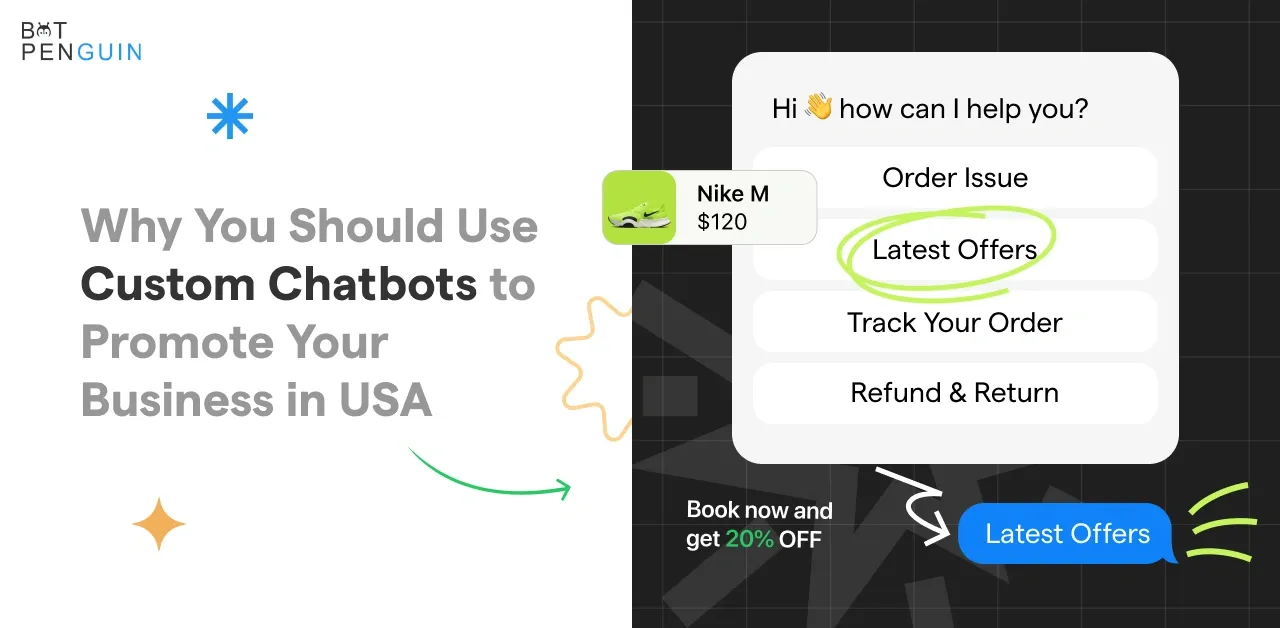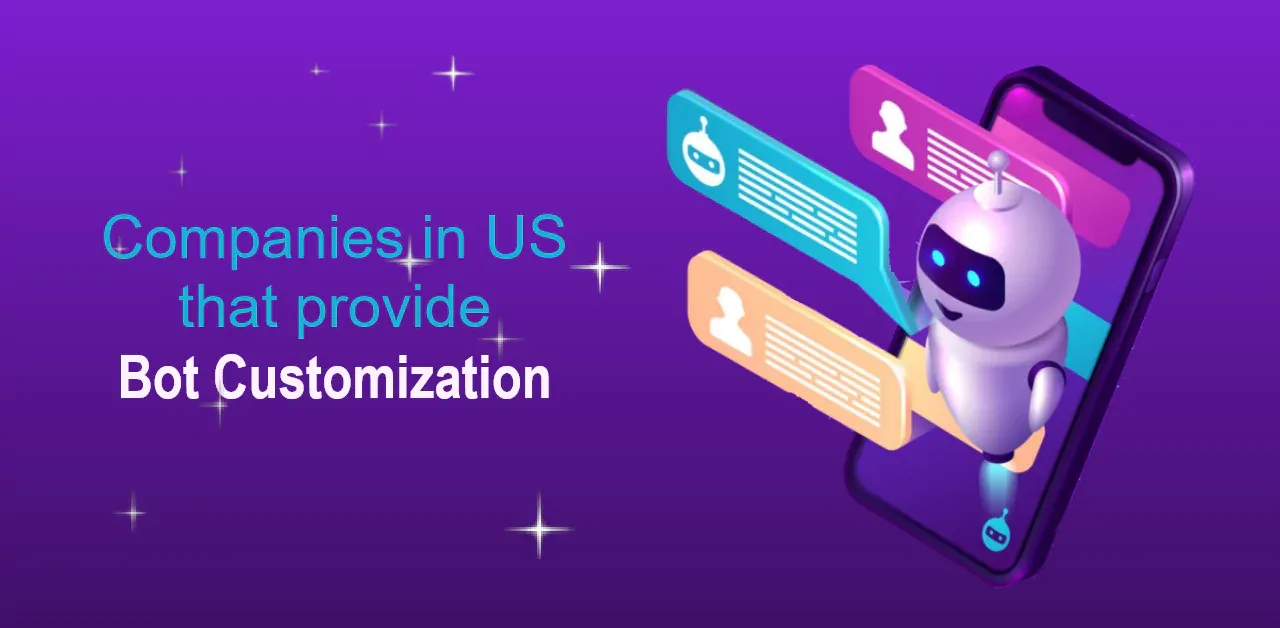ChatGPT has captivated people with its human-like conversation skills. But to really leverage it for business, customization is needed.
The global conversational AI market will reach $18.7 billion by 2026 (MarketsandMarkets), as companies see the power of bespoke solutions. Gartner shows 80% of enterprises will soon experiment with conversational AI. But custom builds are tricky, needing robust integrations and strategic design.
Luckily, there are platforms that enable building a branded Whitelabel ChatGPT bot without coding. By owning the bot, businesses provide unique value to customers. However, thoughtfully constructing a custom integration requires consideration.
After all the goal is a solution that sounds human, understands context, securely integrates, and provides business value.
In this article, we share vital tips for building a Whitelabel ChatGPT bot that drives efficiency and delights users. Let's explore how companies can unlock conversational AI's full potential through strategic custom development!
5 Essential Tips for Building Custom Whitelabel ChatGPT bot
Here are 5 essential tips for building a custom whitelabel ChatGPT bot:
1. Define the Purpose and Scope
Before we start building our bot, it's vital to clearly define its purpose and scope. Take some time to think about what you want your bot to achieve.
Is it going to provide customer support, answer frequently asked questions, or assist with a specific task? Understanding the purpose of your bot will help you design the conversation flow and train it with the right data.
- Identify Your Target Audience
To build a successful chatbot, you need to know your target audience. Who will be interacting with your bot? Are they young tech-savvy individuals or older adults? Understanding your audience's characteristics and preferences will help you tailor the custom Whitelabel ChatGPT bot's language, tone, and user experience to meet their expectations.
- Set Clear Goals
Setting clear goals is crucial to measure the success of your bot. Define specific metrics or Key Performance Indicators (KPIs) that align with your bot's purpose. It could be the number of successful interactions, user satisfaction ratings, or conversion rates. These goals will guide your development process and enable you to track the custom Whitelabel ChatGPT bot's performance effectively.
2. Design a Conversational Flow

To build a custom Whitelabel ChatGPT bot, it's essential to design a conversational flow that feels natural. Start by mapping out the different user intents and possible user responses. Each intent should have a corresponding bot response that guides the conversation forward.
- Use Introduction and Greetings
A warm and friendly introduction sets the right tone for your custom Whitelabel ChatGPT bot. Use personalized greetings and introduce the bot's capabilities early on.
Make sure to include a concise explanation of how the custom Whitelabel ChatGPT bot can assist the user.
- Handle User Queries Effectively
Empower your custom Whitelabel ChatGPT bot to understand and handle user queries effectively. Implement a built-in NLP (Natural Language Processing) system that can accurately interpret user input and provide relevant responses.
This will enhance the custom Whitelabel ChatGPT bot's overall usability and prevent frustrating experiences for your users.
- Include Personality and Humor
To build a custom Whitelabel ChatGPT bot that stands out, inject some personality and humor into its responses.
Users appreciate a bot that feels human-like and can engage in witty or playful conversations. Be mindful of the tone and context to ensure that the humor is appropriate and aligns with your brand image.
3. Train Your Bot with Quality Data
To build a custom Whitelabel ChatGPT bot you need to train it with quality data. The better the training data, the more accurate and reliable your bot's responses will be.
- Collect and Curate Data
Start by collecting relevant data that represents the conversations your bot is likely to encounter. This can include historical customer service chats, frequently asked questions, or any relevant text data.
Curate this data to remove noise and ensure that it reflects the language and tone you want your bot to adopt.
- Use Pretrained Models
Leverage pretrained models from ChatGPT to bootstrap your custom Whitelabel ChatGPT bot's understanding of language.
These models provide a great starting point and can save you a significant amount of time and effort. Fine-tune the pretrained model with your curated data to make it more relevant and specific to your custom Whitelabel ChatGPT bot's purpose.
- Continuous Improvement
Building a custom Whitelabel ChatGPT bot doesn't end with the initial training. Regularly review and update your training data to keep your bot up to date. Monitor user interactions and feedback to identify areas where the bot can be improved.
Incorporate these improvements into the training data and retrain your custom Whitelabel ChatGPT bot to enhance its knowledge and performance.
Suggested Reading:
Future of Conversational AI: BotPenguin's Whitelabel ChatGPT
4. Test and Iterate
Testing and iterating are integral parts of building a successful chatbot.
- Conduct User Testing
Before deploying your chatbot, conduct user testing to gather feedback and identify areas for improvement. Invite a diverse group of users to interact with your bot and provide feedback on its usability and effectiveness.
This feedback will help you refine the conversational flow and iron out any issues or misconceptions.
- Iterate Based on Feedback
Use the feedback from user testing to iterate and improve your bot.
Address any pain points or limitations identified during testing and implement changes to enhance the user experience. Continuously iterate and refine your bot based on real user feedback to ensure it meets the needs and expectations of your target audience.

5. Deploy and Monitor
After building a custom whitelabel ChatGPT bot, it's time to deploy it and monitor its performance.
- Choose the Right Deployment Platform
Select a deployment platform that suits your needs and technical capabilities. Consider factors such as scalability, security, and integration options when choosing the platform to host your bot.
Ensure that the platform supports whitelabeling, allowing you to customize the branding and user experience.

- Monitor and Analyze Performance
Monitor and analyze the performance of your custom Whitelabel ChatGPT bot after deployment. Track the metrics defined in the first tip to evaluate the success and effectiveness of your bot.
Use analytics tools to gain insights into user interactions, popular queries, and areas for improvement. This data will guide future enhancements and updates to further refine your bot.
And if beginning with Custom Whitelabel ChatGPT bot is your challenge then meet BotPenguin- the home of chatbot solutions. With over 60+ integration options available, BotPenguin makes it easy to launch and scale white-label ChatGPT solutions across industries like eCommerce, healthcare, finance, and more.
Contact our team today to discuss pricing plans and get started building your branded ChatGPT experience.
- Whitelabel ChatGPT
- Hire ChatGPT Developers
- Custom ChatGPT Plugins
- ChatGPT Clone
- ChatGPT Consultant
Conclusion
Building custom whitelabel ChatGPT solutions require thoughtful strategy, seamless integration, and user-centric design. As explored in this article, taking the time to build a tailored conversational tool optimized for your business delivers immense value.
With the right custom whitelabel integration from specialist providers like BotPenguin, enterprises can transform workflows and customer experiences through the power of conversational AI. BotPenguin makes it simple for any organization to develop branded, specialized ChatGPT bots that become true business assets.
At the end of the day, off-the-shelf conversational AI can never fulfill the unique needs of modern companies. But by following the tips in this guide around use case discovery, legal compliance, proactive iteration and stakeholder collaboration, you can develop a custom whitelabel ChatGPT bot that checks all the boxes.
The businesses that put in the effort now to build strategic custom integrations will reap long-term rewards in efficiency, customer satisfaction and staying ahead in an increasingly AI-driven landscape.
The future of conversational AI is not one-size-fits-all – it's tailored, Whitelabel solutions that provide a real competitive edge.
Frequently Asked Questions (FAQs)
Can I customize the appearance of my ChatGPT bot?
Yes, you can customize the appearance to match your branding by modifying the interface design, colors, and adding your logo.
What's the recommended hosting solution for a ChatGPT bot?
You can use a variety of solutions, but popular options include hosting on platforms like AWS, Google Cloud, or Heroku.
How can I ensure my ChatGPT bot understands and responds correctly?
Provide clear and specific instructions in your training data to help the model understand desired behavior and context.
Can I integrate external APIs into my ChatGPT bot?
Certainly! You can integrate external APIs to fetch data, perform actions, or provide additional functionality within your bot.
What's the best way to manage and improve my ChatGPT bot over time?
Regularly evaluate user feedback, monitor interactions, and iterate on the bot's responses to continually improve its performance and effectiveness.



